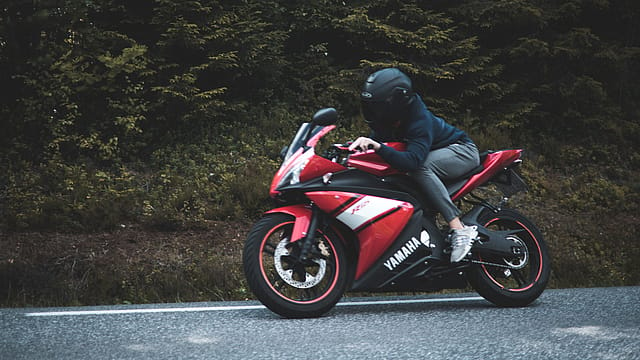Bystander: The return of the Japanese
ADVERTISEMENT

If there is one industry that can endear itself to Prime Minister Narendra Modi's push for local manufacturing, it will undoubtedly be the two-wheeler industry. Though its success was scripted in the early days of India’s liberalisation push in the early 90s, at this juncture, the industry is where all others should aim to be.
Last year, a little over 20 million two-wheelers were sold in India and more than two-thirds of it came from Indian companies. The top player, Hero MotoCorp, the biggest two-wheeler company in the world, sold over 7.5 million units. Over the years, the industry has developed some serious skills in designing products—enabling them to compete against the best. Indian companies export, too—early signs of internationalising their business.
TVS Motors, the third-largest player in India, released their new scooter, Jupiter, which is now competing with the market leader Honda Motor’s Activa, which is now India’s No.1 selling two-wheeler. Royal Enfield, which makes the Bullet motorcycles, is one of the most valuable auto companies in India. Leveraging its differentiated product strategy, Eicher has made a niche for itself in what appeared to be a mature market.
December 2025
The annual Fortune 500 India list, the definitive compendium of corporate performance, is out. This year, the cumulative revenue of the Fortune 500 India companies has breached $2 trillion for the first time. Plus, find out which are the Best B-schools in India.
It’s true that all the Indian two-wheeler firms, except Eicher Motors, began their journey with a Japanese partnership or tie-up, but their success in the last decade has been entirely the result of their own strategies. The 20-year growth in market capitalisation of the four big Indian two-wheeler companies can be described by a “hockey stick” line graph every CEO or marketing manager would drool to have for his or her business.
The two-wheeler sector’s success also vindicates the policy adopted by the government as regards foreign investment in the sector. The early joint ventures that domestic players entered into with foreign companies helped them learn the tricks of the trade. By the time foreign players were allowed to open shop on their own, domestic players had grown in exposure and technological knowledge to hold their own.
But, there is a little cloud showing up in the horizon that no local two-wheeler wants to talk about. Honda Motors, setting up shop on its own nearly fifteen years ago, is closing in on the market leader Hero Motors and will most likely gain the coveted No. 1 spot in the next two years. Players like Suzuki and Yamaha, who are growing much faster than the other players in the market, given their smaller base. Given their long expertise in making two-wheelers, both Suzuki and Yamaha are bringing in flashy new models in a market that was largely a staid commuter motorcycle market. Hero’s biggest seller is still the variant of 100cc Splendour that promises economy over styling.
Today, Hero holds a little over 50% of the motorcycle market but in the next five years, the three Japanese firms together are expected to be well past that number. The rapid growth in volumes of Eicher’s Bullet, priced at twice that of commuter bikes, revealed a latent demand for expensive products. With an unbeatable depth in their international product lineup, the Japanese companies are quickly positioning themselves at the aspirational end of the market. Yamaha’s latest 150cc bike R15, priced at Rs 1,48,000, has a two-month waiting list, while Suzuki has launched a 150cc version of its 1,800cc Intruder priced under Rs 1 lakh. Honda’s 150cc Hornet priced similarly has been a hit, slowly tilting the value market towards the Japanese firms. Think of how Toyota ate into the SUV space with its high-priced Innova, compared to Mahindra’s Scorpio and Tata’s Safari.
It is not that the Indian companies have been sitting idle. Bajaj bought a stake in street bike specialist KTM and has introduced several variants priced between Rs 1.5 lakh-Rs 3.5 lakh, which has seen good sales traction. It also launched a 400cc Dominar but that has seen only a limited success. TVS, the third-largest two-wheeler company, has tied up with BMW to manufacture bigger bikes but has launched its own version of these bikes, which also have a waiting list. Hero is launching a 200cc bike shortly, designed from scratch to take on competition. Last quarter, Hero even increased its market share in the motorcycle market, while Honda saw a small dip in its scooter market share but over the last decade the Japanese have increased their share each year.
How far the Indian companies will go to fight competition and the coherence of their strategy will eventually determine the winners. Already, the Indian companies are facing a squeeze in their margins and their share price-to-earnings ratio has been declining as they compete harder in the market. In the next few years, the glass which appeared half full will look half empty for the Indian players if they don’t hasten their responses to cater to the millennial customer who will be old enough to obtain a two-wheeler driving licence. For these customers, style and experience matter more than fuel economy, unlike their parents, who would stick with their first bike or car for a decade.
The noise over import duties on Harley Davidson may be hogging headlines, but there is a silent Japanese wave coming. It may just be the best test yet for Indian bike manufacturing.
